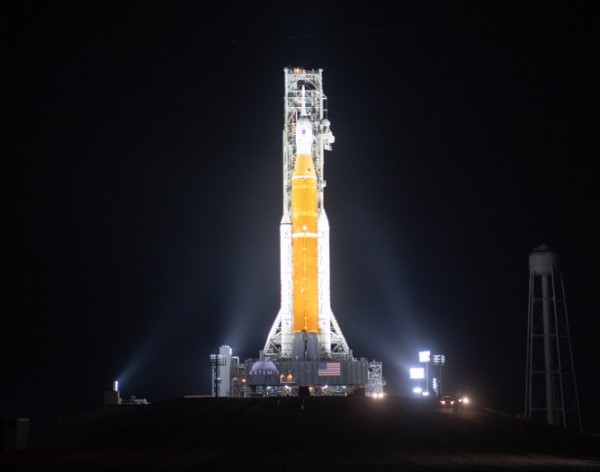Selected
- Details
- Written by Grant Broadcasters
- Category: Selected
- Hits: 208

Nathan Cleary's man-of-the-match outing against Parramatta has put the NRL on notice with Eels coach Brad Arthur admitting the Penrith half kicked his team to death.
Cleary was the star in the Panthers' 27-8 qualifying-final win on Friday, going on a blitz during a 10-minute period in the second half as Penrith went from one point down to 17 points up.
The 24-year-old three times forced errors from former teammate Waqa Blake with his bombs, with two leading to tries and putting the Panthers on the front foot.
He also did it all on return from a five-week suspension, showing no signs of rust as he took full control of Penrith's attack and sent the Eels to another knockout semi-final.
"Nathan kicked us to death really," Arthur admitted.
Penrith, for now, are the least of Parramatta's concerns as the Eels try to avoid being knocked out in the second week of the finals for the fifth time in six years.
But, ultimately, any team who wants to win this competition knows Cleary is likely to be a problem for them.
The Panthers are straight through to the preliminary final, and look as dangerous as any defending premiers possibly could be at this time of the season.
Their only real concern is a hamstring injury to Taylan May, who also found himself on report for a high tackle on Will Penisini early in the match.
But otherwise, the Panthers will enter their preliminary final off the back of a fortnight's rest and, for most players, with just one game in the 28 days prior.
And beyond all else, they have the benefit of an in-form Cleary at halfback.
"He's your star player, your halfback. When he's out there you can feel the confidence grow," co-captain Isaah Yeo said.
"His kicking game was outstanding. He knew when to run.
"You could see it happening at training but then, obviously, to come out on the big stage, he was always going to have that pressure on him.
"But he was the best player on the park by a mile tonight."
Yeo's comments came as Nathan's father Ivan praised his son's control, with the No.7 also icing a field goal.
"He came up with the right kick at the right time most of the time," Ivan said.
"We had this very game last year up in the qualifying final in Townsville, where Blake Taaffe was playing fullback (for South Sydney).
"Nathan got him on the first one and then he probably did it too often. He didn't quite get the right field position that night.
"Whereas tonight pretty much every time he put one of those floaters up we got we got a result or close to it."
© AAP 2022
Image: https://www.flickr.com/photos/naparazzi/, CC BY-SA 2.0 <https://creativecommons.org/licenses/by-sa/2.0>, via Wikimedia Commons
- Details
- Written by Grant Broadcasters
- Category: Selected
- Hits: 181

(Queen Elizabeth II watches with a smile from the balcony of Buckingham Palace after the Trooping the Color ceremony in London, Thursday, June 2, 2022, on the first of four days of celebrations to mark the Platinum Jubilee. The events over a long holiday weekend in the U.K. are meant to celebrate the monarch's 70 years of service. (Jonathan Brady/Pool Photo via AP)
Queen Elizabeth, Britain's longest-reigning monarch and the country's figurehead for seven decades, has died aged 96, Buckingham Palace says.
"The Queen died peacefully at Balmoral this afternoon," Buckingham Palace said in a statement.
"The King and The Queen Consort will remain at Balmoral this evening and will return to London tomorrow."
Elizabeth's eldest son Charles, 73, automatically becomes king of the United Kingdom and the head of state of 14 other realms including Australia, Canada and New Zealand.
His wife Camilla becomes Queen Consort.
Her family had rushed to be by her side at her Scottish home, Balmoral Castle, after doctors expressed concern about her health.
She had been suffering from what Buckingham Palace has called "episodic mobility problems" since the end of last year, forcing her to withdraw from nearly all her public engagements.
Queen Elizabeth II, who was also the world's oldest and longest-serving head of state, came to the throne following the death of her father King George VI on February 6, 1952, when she was just 25.
She was crowned in June the following year.
The first televised coronation was a foretaste of a new world in which the lives of the royals were to become increasingly scrutinised by the media.
"I have in sincerity pledged myself to your service, as so many of you are pledged to mine. Throughout all my life and with all my heart I shall strive to be worthy of your trust," she said in a speech to her subjects on her coronation day.
Elizabeth became monarch at a time when Britain still retained much of its old empire.
It was emerging from the ravages of World War II, with food rationing still in force and class and privilege still dominant in society.
Winston Churchill was Britain's prime minister at the time, Josef Stalin led the Soviet Union and the Korean War was raging.
In the decades that followed, Elizabeth witnessed massive political change and social upheaval at home and abroad.
Her own family's tribulations, most notably the divorce of Charles and his late first wife Diana, were played out in full public glare.
While remaining an enduring symbol of stability and continuity for Britons at a time of relative national economic decline, Elizabeth also tried to adapt the ancient institution of monarchy to the demands of the modern era.
"She has managed to modernise and evolve the monarchy like no other," her grandson Prince William, who is now heir to the throne, said in a 2012 documentary.
© RAW 2022
- Details
- Written by Grant Broadcasters
- Category: Selected
- Hits: 185

Australia has reached a grim COVID-19 milestone as health professionals call on residents not to be complacent with restrictions easing.
The country on Saturday recorded another 39 coronavirus-related fatalities, bringing the national COVID-19 death toll to 14,053.
Some 7582 new cases were reported across the country on Saturday as the latest Omicron peak subsides.
But the true statistics could be higher as Queensland and the Northern Territory have stopped reporting weekend COVID-19 statistics.
Meanwhile, a senior Australian Medical Association official is reminding people not to be complacent as a number of COVID-19 rules change this week.
From Friday, isolation requirements will be dropped to five days for people who no longer have symptoms, but will remain at seven days for workers in high-risk settings.
The mask mandate for domestic flights will also go, with face coverings voluntary from Friday.
"We still need to be very cautious and not become complacent," AMA Queensland vice-president Nick Yim told the ABC on Saturday.
"It's not just COVID that's circulating among our community. We still have the common cold, we still have influenza, so a lot of respiratory viruses.
People who were unwell shouldn't go to work or send their children to school, Dr Yim said.
"At the same time, if people haven't had their COVID booster, please get that booster."
Almost 72 per cent per cent of eligible Australians have received three doses of a COVID-19 vaccine, the federal health department says.
Close to 40 per cent have had their fourth dose.
© AAP 2022
- Details
- Written by Grant Broadcasters
- Category: Selected
- Hits: 191

NASA's new moon rocket sprang another dangerous fuel leak, forcing launch controllers to call off their second attempt to send a crew capsule into lunar orbit with test dummies.
The first attempt earlier in the week was also marred by escaping hydrogen, but those leaks were elsewhere on the 98-metre rocket, the most powerful ever built by NASA.
Launch director Charlie Blackwell-Thompson and her team tried to plug Saturday's leak the way they did the last time: twice stopping and restarting the flow of super-cold liquid hydrogen in hopes of removing the gap around a seal in the supply line. They also flushed helium through the line. But the leak persisted.
Blackwell-Thompson finally halted the countdown after three to four hours of futile effort.
NASA wants to send the crew capsule attached to the rocket around the moon, pushing it to the limit before astronauts get on the next flight. If the five-week demo with test dummies had succeeded, astronauts could fly around the moon in 2024 and land on it in 2025. People last walked on the moon 50 years ago.
On Monday, hydrogen fuel escaped from elsewhere in the rocket. Technicians tightened up the fittings over the past week, but Blackwell-Thompson had stressed that she wouldn't know whether everything was tight until Saturday's fueling.
Thousands had taken up position along the coast to see the Space Launch System rocket soar. Local authorities had expected massive crowds because of the long Labor Day holiday weekend.
The $4.1 billion test flight is the first step in NASA's Artemis program of renewed lunar exploration, named after the twin sister of Apollo in Greek mythology.
Twelve astronauts walked on the moon during NASA's Apollo program, the last time in 1972.
Artemis -- years behind schedule and billions over budget -- aims to establish a sustained human presence on the moon, with crews eventually spending weeks at a time there. It's considered a training ground for Mars.
© AP 2022
Image: NASA HQ PHOTO/flickr
Page 6 of 191